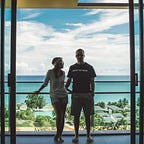THEORY EXAMS: PRIVATE PILOT LICENSE
Back in early August I did my theory exams for the private pilot license in Germany. I say exams because there are not just one, but a number of topics for which you need to pass individually with at least 75% in each topic.
Ahead of the exams I basically didn’t leave the house, going through a question catalogue of 1000+ questions, after I had already studied my various text books, to ensure I’d not only understand the material in general but also be able to get a good feel for the exam questions. The actual exam questions would be chosen out of this ‘approved’ question catalogue, so if you manage to remember literally all questions, nothing should come as a surprise. That wasn’t quite the case, but I’ll get to that a bit later.
The exam questions are all multiple choice and you get four possible answers. In most cases they are based on your knowledge and understanding, but some others (such as in flight planning) are based on calculations and accurate flight planning procedures (such as drawing the right line from one place to another on the map, measuring the distance, and then calculating with that number and hoping you’ll get it just right)…
I combined the theory exams also with radio telephony (& communication), which meant after picking 1 of 4 answers for several hours, I’d have a practical radio communications simulation as well, in both German and English.
The 9 theoretical topics and exams
For each topic you have between 16–32 minutes (based on 2 minutes per question). For flight planning & performance you get more time, as you need to actually use a good old map to draw distances and make a flight plan based on various instructions. You also need to calculate the weight and balance to ensure if you load your plane with too much luggage — or you ate too much the day before — you might not be able to bring that passenger with you…
The exam topics are: basics of flying (like aerodynamics), human performance (a vast majority of mistakes and accidents are due to psychological/human nature), flight performance & flight planning, meteorology (probably my least favorite topic I was most worried about — and yet got 100% despite my disbelief), aircraft science, navigation, operational procedures (like what do you do if your engine fails?), air law, and lastly communication.
In the end, I passed with an overall average score of 97.2% so studying certainly paid off. The questions were overall mostly as expected from the question catalogue — I used the official Boeing course-ware to study. However, a few surprises particularly in air law and flight planning and performance caught me off guard. In air law, several questions were asked in such a tricky way that I ended up confusing myself for longer than I should have. In flight performance I was used to that some of the basics for the weight and balance and other performance-related metrics already having been calculated, whereas in the exam I had to do it from scratch — wasn’t a big problem (it’s still mostly reading numbers off tables and connecting one point with another), but took me longer than I thought.
Radio telephony simulation
The next part of the exam (after a much-needed lunch break) consisted of the quite practical radio telephony exam.
Since I did this in both English and German, I started this off by doing a translation. For this, I was given an archaic official text excerpt from some air law written in English (archaic because it still referred to Yugoslavia…). I then had a minute or two to look it over, make some notes on scratch paper if need be, and then orally translate to German. No big deal, once you watch out for ‘official terms’ such as that “pilot” in English shouldn’t just be “Pilot” in German (duh!?) but actually “Luftfahrzeugfuehrer” (right…)
After that, together with one other candidate, we are given approach & landing charts for two airports (like the one in the picture), and are then each supposed to simulate both a flight departure and arrival… “Landshut ground, Cessna 150, Delta-Echo-Charlie-Kilo-Tango, VFR flight to Munich leaving control zone at Romeo, request taxi…” and so on.
Fun stuff, zero mistakes, and all good!
Except I learned as I was given my certificate that I’d still need to do the official ICAO language proficiency test in English, since apparently being fluent in English does not constitute “flying/technical fluency”. Fair enough? More about that soon…
And now that that is over — I can concentrate on the real fun stuff: flying!
